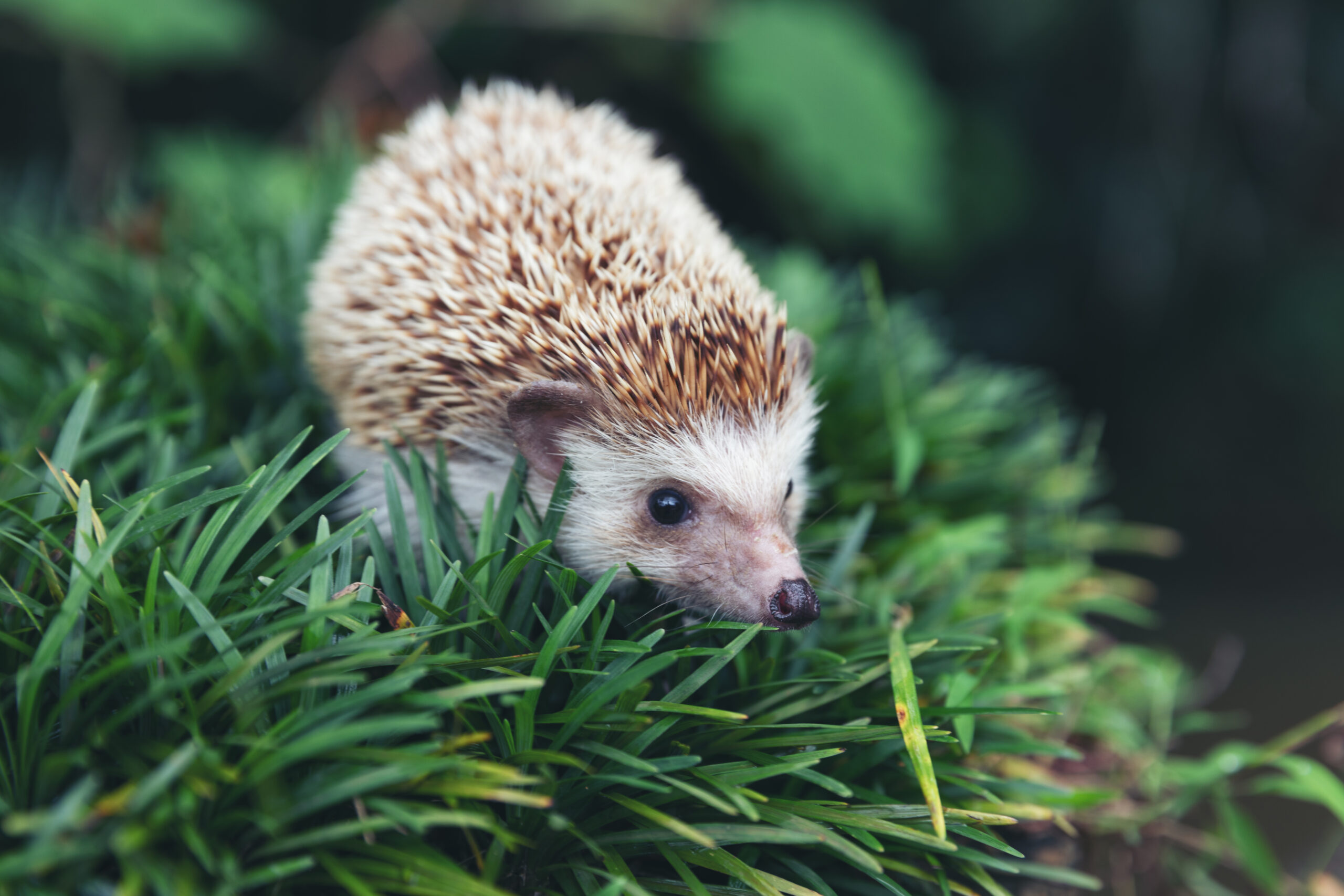
Quick Answer: There are 17 recognized hedgehog species across Africa, Asia, and Europe, each with unique adaptations to their habitats.
Key Takeaways:
- Hedgehogs are diverse and adaptable mammals found across Europe, Africa, and Asia, with each species exhibiting unique traits such as size, coloration, and spine patterns that aid in their survival and identification.
- These creatures face significant threats from habitat loss, human expansion, and climate change, with some species listed as vulnerable or endangered, necessitating conservation efforts and habitat protection.
- Individuals can support hedgehog populations by creating hedgehog-friendly environments, participating in conservation efforts, and engaging in responsible wildlife observation to ensure the well-being and longevity of these species.
Comprehensive List of Hedgehog Species
Hedgehogs are fascinating creatures, and their species are as diverse as the regions they inhabit. From the rolling landscapes of Europe to the varied ecosystems of Africa and the vast terrains of Asia, these spiny mammals have adapted to thrive in different environments. This section offers a detailed look at the various hedgehog species around the world, complete with their common and scientific names, and distinctive features.
African Hedgehog Species
Africa is home to a unique group of hedgehogs, adapted to the continent’s diverse habitats. Among them is the African Pygmy Hedgehog (Atelerix albiventris), a favorite among pet owners for its small size and friendly demeanor. This species, along with the Algerian Hedgehog (Atelerix algirus), the Somali Hedgehog (Atelerix sclateri), and the Southern African Hedgehog (Atelerix frontalis), represents the continent’s native hedgehog population. These species vary in size and coloration but share common traits like a diet of insects and the ability to roll into a ball for protection. Their habitats range from savannas to forests, and some are facing challenges due to habitat loss.
Asian Hedgehog Species
Asia’s hedgehogs are as intriguing as the continent itself. The Long-eared Hedgehog (Hemiechinus auritus), for instance, is known for its prominent ears and lives in desert areas. The Indian Long-eared Hedgehog (Hemiechinus collaris) and the Brandt’s Hedgehog (Paraechinus hypomelas) also call Asia home. These species are well-suited to their environments, with behaviors and physical traits that enable them to survive in both arid and forested regions. Conservation efforts are crucial for these hedgehogs, as they face threats from human expansion and loss of natural habitat.
European Hedgehog Species
Europe’s hedgehogs are beloved icons of the region’s wildlife. The European Hedgehog (Erinaceus europaeus) is perhaps the most recognized, often found in gardens and depicted in folklore. Other species include the Northern White-breasted Hedgehog (Erinaceus roumanicus), the Southern White-breasted Hedgehog (Erinaceus concolor), and the Amur Hedgehog (Erinaceus amurensis). These hedgehogs prefer areas with ample cover, such as woodland edges and pastures. They face their own set of challenges, including road mortality and habitat fragmentation due to urban development.
Notable Subspecies and Variations
Within the main hedgehog species, there are several subspecies and regional variations that showcase the adaptability of these animals. Subspecies are often determined by genetic differences and environmental factors, and recognizing these distinctions is vital for conservation. For example, the European Hedgehog has several subspecies that display slight variations in color and size, depending on their location. Understanding the taxonomy and genetic variation of hedgehogs helps in protecting these creatures and ensuring their survival for generations to come.
Each species and subspecies of hedgehog brings something special to the table, be it a unique adaptation or a role in their local ecosystem. By learning about these diverse creatures, we can appreciate the richness of wildlife and the importance of preserving it. Whether you’re a nature enthusiast or simply curious about hedgehogs, this comprehensive list serves as a gateway to the world of these remarkable animals.
Habitats and Geographic Distribution
Hedgehogs are some of the most adaptable creatures on our planet. They make their homes in a wide array of environments, each with its unique challenges and benefits. Understanding where hedgehogs live helps us appreciate their survival skills and the importance of preserving their habitats.
Hedgehogs in the Wild: Where Do They Live?
In the wild, hedgehogs are found in a variety of settings. They are not picky and make do with what nature offers, from forests and grasslands to deserts. Hedgehogs need places to hide during the day and safe spots to forage at night. They’re also great for the environment, munching on insects and aerating the soil as they search for food. But their homes are under threat. As we build more and change the land, we must remember to protect these areas where hedgehogs thrive.
Country-Specific Habitats of Hedgehogs
Hedgehogs don’t just live in one type of place. They’re all over the world, and they’ve adapted to many different countries and climates. For example:
- In the UK, hedgehogs are often found in gardens and hedgerows.
- Over in Africa, species like the Four-toed Hedgehog make their homes in the savanna.
- In the deserts of the Middle East, the Long-eared Hedgehog has adapted to a much drier home.
Sadly, human actions like urbanization and farming can destroy these habitats. But there’s good news too. Some places are working hard to keep hedgehog homes safe. By creating hedgehog-friendly spaces and protecting natural areas, we can help these little creatures survive and thrive.
Adaptations to Different Environments
Hedgehogs are not just cute; they’re also incredibly tough. They’ve developed some amazing ways to survive in their different homes. Here are a few:
- Their spines are perfect for protection against predators.
- Hibernation helps them get through cold winters when food is scarce.
- Being nocturnal keeps them safe from the heat of the day and lets them hunt for food in peace.
These adaptations are the result of a long history of changes that have helped hedgehogs become the survivors we know today. Whether they’re braving the cold or avoiding danger, hedgehogs have some impressive tricks up their sleeves.
Physical Characteristics and Behaviors of Hedgehogs
Hedgehogs are easily recognized by their spiny coat, a unique feature among small mammals. These spines, which are modified hairs, provide protection against predators. Hedgehogs are generally small to medium-sized, with coloration ranging from brown and black to cream. Their sensory capabilities are quite sharp; they have an excellent sense of smell and hearing, which they rely on for foraging and detecting danger. Hedgehogs are known for their curious behaviors, such as self-anointing, where they cover their spines with saliva, and their ability to roll into a tight ball as a defense mechanism.
Identifying Features of Hedgehog Species
Each hedgehog species has distinct characteristics that set them apart:
- Size: Some species, like the European hedgehog, are larger, while others, like the African Pygmy hedgehog, are smaller.
- Coloration: Varies from dark to light shades, often with a lighter underside.
- Spine patterns: Unique to each species, these can help in visual identification.
These features are not just for show; they play a role in survival. For example, the coloration of hedgehogs can provide camouflage in their natural habitat. High-quality images can help enthusiasts and researchers alike to identify and appreciate the diversity among species.
Diet and Foraging Habits
Hedgehogs are primarily insectivorous, feasting on a diet rich in insects and other invertebrates. They are active foragers, often searching for food at night. A diverse diet is crucial for their health, providing the necessary nutrients for energy and growth. Seasonal changes can affect food availability, prompting hedgehogs to adjust their foraging strategies. To support these creatures, creating a hedgehog-friendly garden with natural food sources like leaf piles and logs can be beneficial.
Hibernation and Seasonal Behaviors
Hibernation is a critical part of a hedgehog’s life cycle. During this time, they undergo significant physiological changes to conserve energy. Environmental cues such as temperature and daylight hours trigger this process. While hibernation is essential for survival during cold months, it comes with risks, such as the danger of waking during a mild winter. Climate change poses a new challenge, potentially disrupting these natural cycles and affecting hedgehog populations.
Reproduction and Lifecycle
The reproductive cycle of hedgehogs begins with mating and ends with the birth of hoglets. The gestation period lasts around four to six weeks, and litter sizes can vary. Young hedgehogs grow rapidly, and the care provided by the mother is crucial during the early stages. The survival rate of hoglets can be influenced by factors like food availability and predation. Understanding the lifecycle stages, from birth to adulthood, and the typical lifespan of hedgehogs, which differs in the wild and in captivity, offers a comprehensive view of their development.
Conservation Status and Threats
Hedgehogs, with their charming faces and unique spiny armor, face numerous challenges in the wild. The conservation status of these creatures varies across species, with some facing a higher risk of endangerment than others. Key threats include habitat loss, the widespread use of pesticides, and the dangers posed by road traffic. Conservation organizations play a pivotal role in safeguarding these small mammals, working tirelessly to ensure their survival for generations to come.
Vulnerable and Endangered Hedgehog Species
Several hedgehog species are teetering on the brink of vulnerability or are already endangered. The IUCN Red List provides a framework for assessing the risk levels of various species, taking into account factors like population trends and habitat availability. For instance:
- The Brandt’s Hedgehog faces threats from habitat destruction in its native range.
- The Long-eared Hedgehog has seen population declines due to overhunting in certain areas.
Recovery stories, such as the conservation efforts that have stabilized some populations, offer valuable lessons and hope. These successes underscore the potential for positive change when effective strategies are implemented.
Human Impact on Hedgehog Populations
Human activities have significantly altered the landscapes hedgehogs call home. Urban development leads to habitat fragmentation, making it difficult for hedgehogs to find food and mates. Roads and traffic pose lethal obstacles, resulting in high mortality rates for these animals. Additionally, the use of pesticides can poison hedgehogs and reduce their food sources. Climate change, driven by human actions, further complicates their survival by disrupting natural cycles and altering habitats.
Natural Predators and Survival Challenges
In the wild, hedgehogs have evolved several defense mechanisms to protect themselves from natural predators. Their spines are an effective deterrent against many would-be attackers. However, hedgehogs still face threats from:
- Predatory birds like owls and eagles.
- Carnivorous mammals such as foxes and badgers.
Invasive species can outcompete hedgehogs for food or introduce new diseases to which hedgehogs have no immunity. Understanding these natural challenges is crucial for developing strategies to help hedgehogs navigate the dangers they encounter in their daily lives.
By raising awareness of the threats hedgehogs face and the importance of conservation efforts, we can contribute to the protection of these unique animals. It is our collective responsibility to ensure that all hedgehog species, from the most common to the most endangered, continue to thrive around the world.
Supporting Hedgehog Populations
Hedgehogs are delightful creatures that play a vital role in our ecosystems, particularly in pest control. Fortunately, there are many ways individuals and communities can help support these populations. From crafting hedgehog-friendly spaces to engaging in citizen science projects, every effort counts. By supporting conservation organizations, we can ensure that hedgehogs continue to thrive in their natural habitats.
How to Create a Hedgehog-Friendly Environment
Creating a haven for hedgehogs in your garden or community space is simpler than you might think. Here are some steps to make your green space a sanctuary for these spiny friends:
- Provide food sources like meat-based pet food or specialized hedgehog food.
- Ensure water sources are available, especially during dry spells.
- Create shelter by leaving areas of the garden wild or building a hedgehog home.
- Make your garden accessible by creating hedgehog highways with small gaps in fences.
- Hazard prevention is key; cover drains, check for hedgehogs before using lawnmowers, and ensure ponds have escape routes.
By following these guidelines, you can turn your outdoor space into a hedgehog paradise, offering them the resources they need to flourish.
Participating in Hedgehog Conservation Efforts
Conservation is a collective effort, and there are many ways to get involved:
- Volunteer with local wildlife groups dedicated to protecting hedgehogs.
- Take part in wildlife surveys to help track hedgehog populations.
- Contribute to scientific research by reporting sightings and participating in studies.
- Use your voice for advocacy, promoting hedgehog-friendly policies in your community.
These actions not only aid hedgehogs but also enrich our understanding of these animals, contributing to their preservation for future generations.
Responsible Observation and Interaction With Hedgehogs
When encountering hedgehogs, it’s important to interact with them responsibly:
- Wildlife observation should be done at a distance to minimize stress on the animals.
- Be aware of legal considerations; in some places, it’s illegal to handle wildlife without a permit.
- If you find an injured or orphaned hedgehog, contact a hedgehog rehabilitation center for guidance.
- Providing care for injured wildlife should always be done under the advice of professionals.
By observing these guidelines, we can ensure our interactions with hedgehogs are safe and do not disrupt their natural behaviors or wellbeing.
Supporting hedgehog populations is not just about conservation; it’s about fostering a connection with the natural world. Through simple actions and a commitment to their habitat, we can help ensure that hedgehogs continue to be a part of our global biodiversity.
Frequently Asked Questions
Question 1: How many hedgehog species are there worldwide?
Answer: The exact number of hedgehog species varies as taxonomic classifications can change, but there are generally around 17 recognized species.
Question 2: Can hedgehogs from different continents interbreed?
Answer: No, hedgehogs from different continents belong to different species and cannot interbreed due to geographical and genetic differences.
Question 3: Are there any hedgehog species that are primarily diurnal?
Answer: Hedgehogs are predominantly nocturnal; however, some may be active during the day, especially if disturbed or during the breeding season.
Question 4: What is the smallest species of hedgehog?
Answer: The smallest species is generally considered to be the African Pygmy Hedgehog, which is popular in the pet trade.
Question 5: How can I identify a hedgehog species by its spines?
Answer: Spine patterns and coloration can vary between species, but identification typically requires more than just spine appearance, including size, habitat, and other physical characteristics.
Read more facts about Hedgehogs here.
Further, read about Hedgehog Species here.









